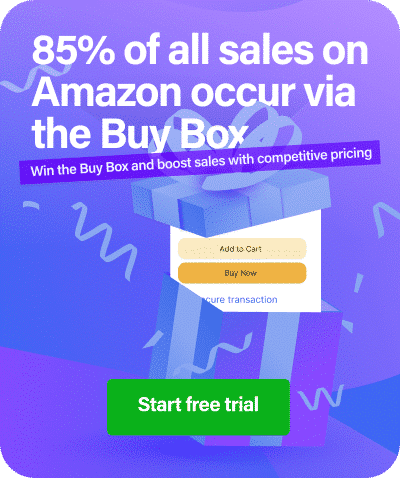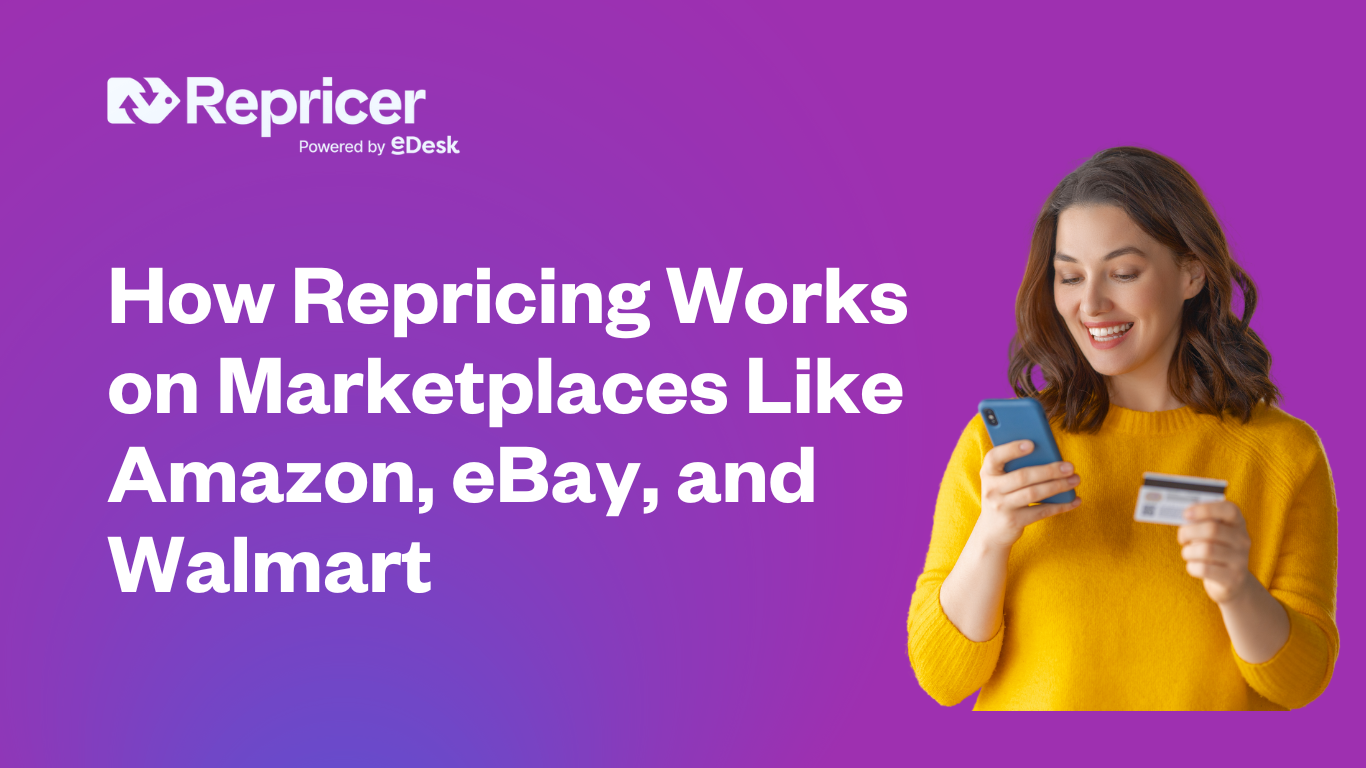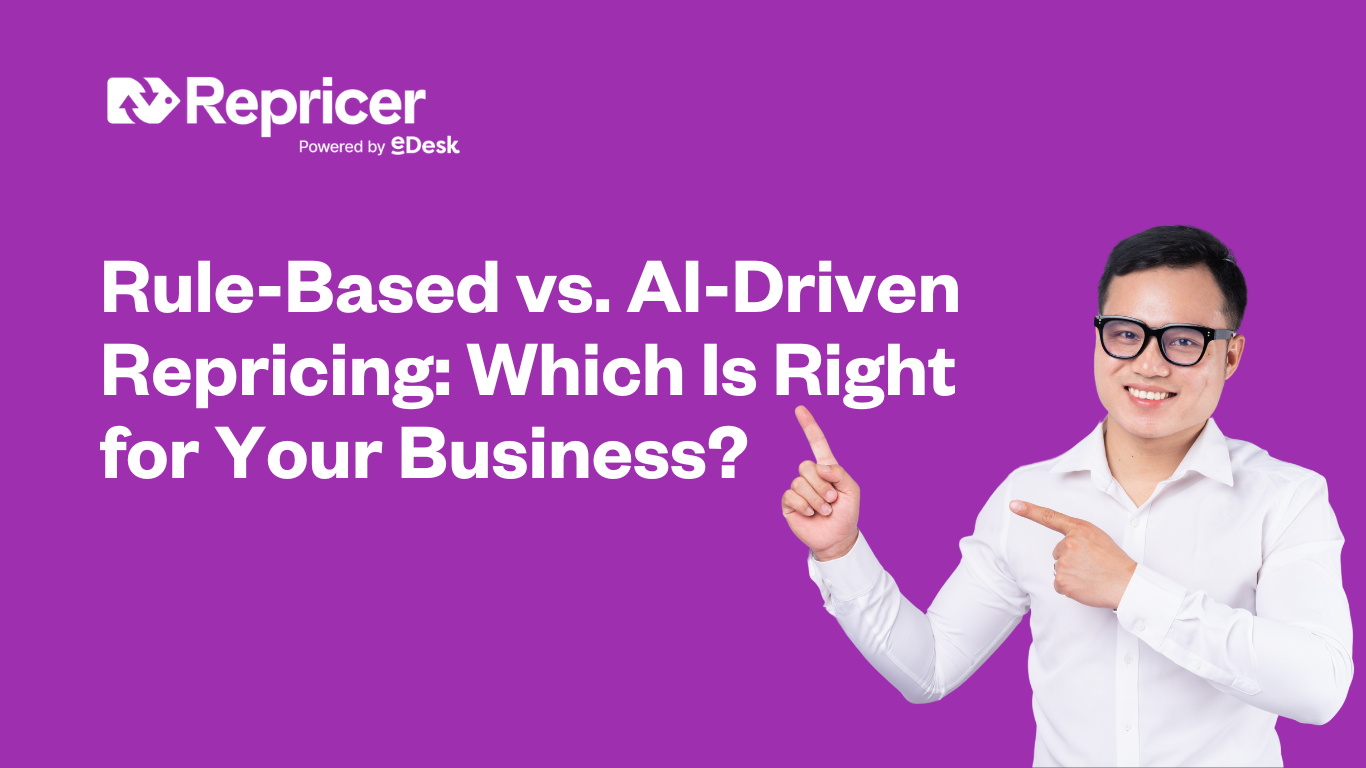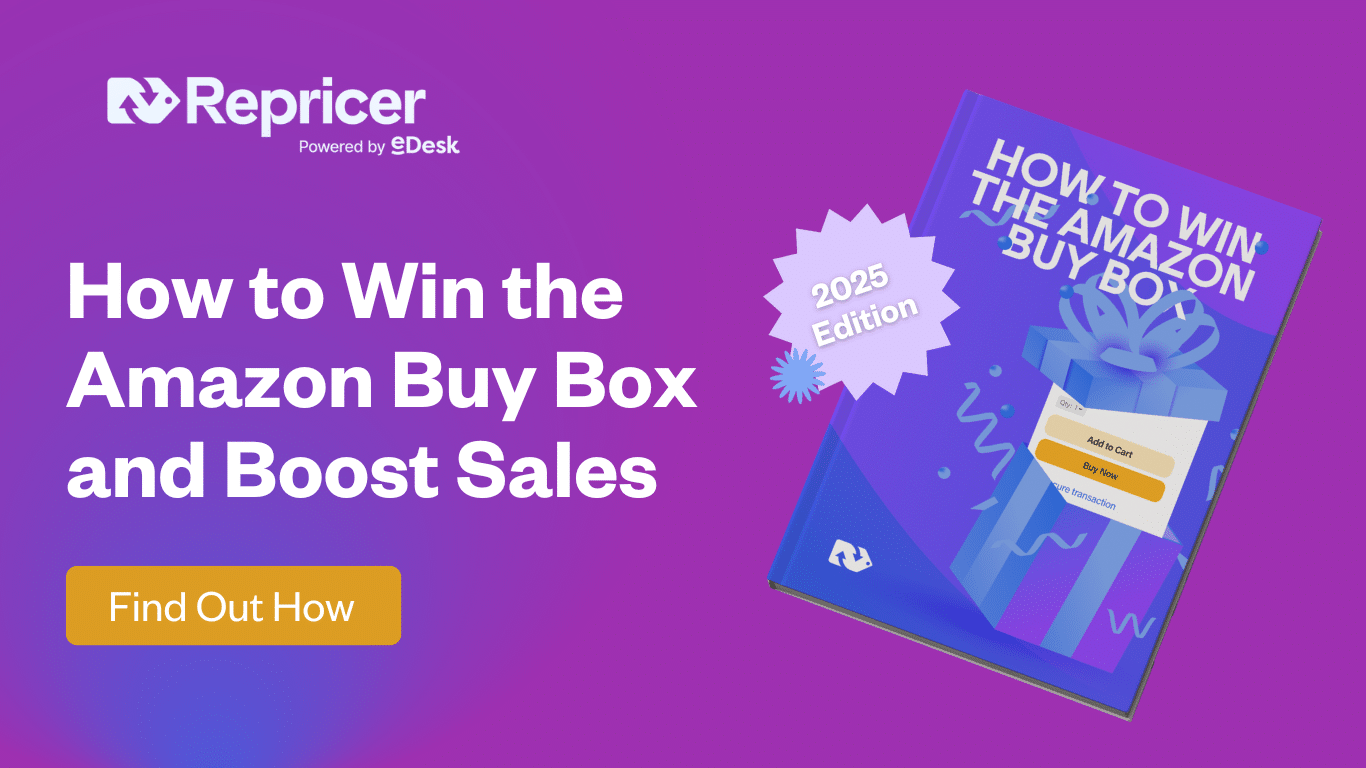Everyone wants to find a best-selling product to sell on Amazon, a real winner that will drive the success of their business.
But while there are many things to take into account when choosing a product, you also have to take into consideration the things you should avoid selling as a new seller.
There are several products that you should perhaps think twice about before selling, for various reasons. Some you should avoid because of the competition, others because they’re prohibited.
In this guide, we’ll provide you with all the information you need to know about the products you should avoid selling on Amazon in 2024. That way, you can avoid choosing a product that will be hard or impossible to sell with any success.
Instead, you can focus your efforts on the winning products that will drive sales and profits for your business.
TL;DR
- Some products should be avoided on Amazon, especially for new sellers, because they present significant challenges.
- Many product categories are gated or prohibited by Amazon.
- You might want to avoid products because they’re competitive, over-saturated, fragile, have low product margins or other reasons.
- Take time choosing your product with care to get off to the right start and enjoy a better chance of success when you start selling on Amazon.
Why Is Choosing the Right Product So Important?
Whichever business model you choose, whether private label or FBA, you’re going to put a lot of time and effort into selling a product on Amazon.
Think of all the time you’ll spend not only brainstorming product ideas but finding a supplier, arranging shipping, marketing your product, setting up and optimizing your Amazon listings, determining the right pricing strategy, dealing with customer issues and refunds, and more.
You want to make sure you choose the right product the first time around, which can save you a lot of wasted time and effort.
If you choose the wrong product, you may invest hours of work and thousands of dollars into trying to make it a success. But you’re fighting a losing battle.
In fact, if you make a bad choice when choosing a product to sell on Amazon, you could end up getting your account suspended or even facing legal consequences.
As such, making the right decision when choosing a product will save you a lot of problems.
With that in mind, here are 13 types of products you should avoid selling on Amazon, especially if you’re a new seller.
1. Restricted and Prohibited Items

Let’s start with the most obvious.
There are some products and categories that are restricted in the Amazon marketplace.
There’s nothing worse than putting the effort into finding a great product, getting ready to list it on Amazon, and then finding that it gets taken down and your account gets suspended.
It’s not exactly the way you want to start your Amazon business.
So spend a little bit of time finding out about which products are not allowed on Amazon and which will require extra work because they’re restricted.
There are different types of restricted products on Amazon. There are those you cannot sell on Amazon at all. There are also FBA-prohibited products, which you can sell on Amazon but not as FBA products.
Things like fake products, counterfeits, illegal products, and products with prohibited ingredients are all to be avoided.
Gated categories (e.g., collectible coins, fine art, jewelry) are an option, but it’s harder to sell in these. You need approval from Amazon, and it can be a time-consuming process that requires resources. It’s just not worth it for most sellers.
It simply doesn’t make sense for most sellers to get involved in gated categories. That doesn’t mean you shouldn’t if you have experience in a particular product, but think very carefully before you do.
2. Products with Low Profit Margins

Besides products that are prohibited or gated, there are several other types of products that are best avoided.
While you can certainly have a go with these products if you want to, they present different challenges that make them not exactly ideal, especially for less experienced sellers.
For example, it’s usually a good idea to stay away from products with low profit margins.
There are many sellers on Amazon making substantial profits from such items, but they tend to be larger, more experienced sellers with bigger budgets.
When you sell a cheaper product with a low profit margin, you have to sell a lot to make a serious profit. That means selling thousands of them.
You also have to pay for storage, shipping, and returns, as well as deal with customer service for each sale.
Big sellers with larger teams can sell thousands of products and make some serious profits. They also have bigger marketing budgets.
They have good reputations with hundreds of reviews, making them more visible on Amazon and more likely to win the trust of shoppers.
So it may be harder to get your listings noticed in the first place. And even if you do make some sales, the profits may not be worth the effort.
Low-priced items that cost less than $10 or $15 are best avoided. With all the fees you have to pay, plus advertising costs, and shipping costs, you could be left with very little profit at the end of the day.
Aim to find products that are more expensive, with larger profit margins, and which are not too competitive to enjoy the best chances of success.
3. Fragile Products
There’s nothing worse for an Amazon shopper than when they buy a product they like the look of, it arrives, they open the box…and it’s broken.
This is going to hurt your reputation as well as cost you money and time dealing with returns, refunds, sending another product, etc.
If you use good packaging, you can reduce the chances that your products arrive broken, but the risk increases substantially with fragile products.
When selling a product in any eCommerce business, it must be sent through the post to the buyer’s address. This is a crucial part of the journey, but you have no control over how it will be handled. Hopefully, it will be looked after, but fragile products make it so much more difficult.
If you have to import the product from the manufacturer, perhaps on the other side of the world, it has to make it all the way safely before you even sell it.
Fragile items can be a huge hassle. Again, you may have a particular reason for selling a fragile product, like something made out of glass. But if not, it’s best to steer clear of these products.
Investing in more protective packaging is probably a requirement, but this costs additional money that you don’t have to think about with more robust products.
When you’re starting out, broken items can really eat into your profits.
4. Fad Products
You browse Amazon and see that there’s a new type of product that’s taking off. It’s got thousands of sales, and everyone is talking about it.
You jump on the bandwagon, find a supplier, make an investment, set up an Amazon store, and start selling…only to find that the fad is over and you’re left with a lot of excess stock to shift.
Fad products are best avoided. You just don’t know when the fad will end. Sure, you could make some serious profits when the fad is the talk of the town, but it could die down just as quickly.
If a product rapidly gains in popularity, it can be tempting to get involved. It looks like there’s easy money to be made, especially if other sellers have not caught onto it yet.
Don’t jump in without first considering your actions very carefully. Can you really afford to be left with thousands of unsold items?
If you do get into a fad product, be aware that sales are likely to slow down. And it could happen at any time.
If you’re prepared for that and happy to make potentially large profits in a short period of time, great! But it’s usually best to avoid them.
5. Cell Phones & Electronics

It’s easy to be tempted by cell phones. They aren’t going anywhere, and people are constantly upgrading their phones, so there’s constant demand.
So why should you avoid them? There are several reasons.
Faulty items are one potential problem. This happens all the time with electronic products through no fault of your own. You could be left dealing with more returns as a result.
It’s not just phones—TVs, gadgets, and other electronic products can easily suffer from high return rates for being faulty.
That’s not what you want when you’re just starting out on Amazon.
But the main reason is that this category is incredibly competitive. There are many, many sellers already in this category, selling everything from cables to phone cases.
It’s difficult to compete on price, and if you sell under your own brand, there’s a limit to how innovative a charging cable can be. Making a name for yourself in this category is hard.
If you’re up for the challenge, ignore this—but you’ve been warned.
6. Over-Saturated Products
On a similar point to the above, there are several markets that are over-saturated on Amazon. It’s easy to get lost in these markets and competing becomes a challenge.
Imagine launching a product in an over-saturated category. You’re instantly competing against huge sellers with lots of customer feedback and good reputations, all selling the same product as you.
That’s hard for any seller to compete with. This means it’s going to be very difficult to make a success of your product.
You can use an automated repricing tool like Repricer to help you win the Buy Box, but it’s still going to be much more work than in less competitive markets.
If you’re up for the challenge, fine. But you’ll probably have to launch plenty of promotions to get traction, and don’t forget about the potentially large advertising costs you’ll face.
7. Seasonal Products

There are many seasonal products sold on Amazon every year, and many sellers do incredibly well with these products.
So why do we recommend avoiding them?
Because sales are inconsistent. Sure, you may make lots of sales over the holiday period, but those sales will quickly die down once the holidays are over.
This isn’t ideal for a new seller. You want to build your business on the practice of making consistent sales.
It’s far better to start off by choosing a product that will sell all year round with consistent demand. With a seasonal product, you have to store it for 11 months and only enjoy any serious sales at a certain time of the year.
If you have your heart set on selling seasonal products, go for it. But it might be a better option to wait until you’re already selling other products with year-round demand.
That way, you can make consistent sales during the year and then add some seasonal products for a sales boost at a particular time of year.
That’s a better option than building your whole Amazon business around seasonal products.
8. Ingestible Products
Ingestible products, like food, drink, and supplements, can be a tricky area. You’ll find lots of these on Amazon, but that doesn’t mean you should jump into this market.
There’s a lot that can go wrong with these. Products go off or go out of date, and they may include ingredients that are controlled. You don’t want the responsibility of dealing with these issues.
Many sellers make huge sales on Amazon selling things like supplements, but there’s a lot more involved. When you’re starting out, it can be a minefield.
There are also things you can and can’t say in your listings when it comes to supplements, and Amazon is strict about these things.
9. Topical Products
It’s a similar story with topical products like cosmetics, makeup, and anything that’s applied to the face or skin.
There’s a risk in selling these types of products. That doesn’t mean you should never sell them—again, you could enjoy great success. But it should probably not be your first choice of product.
If the product you sell causes harm to a customer, you could find yourself facing legal action. It’s better to stick with a simpler product to start with.
10. Products with Advertising Restrictions
Always consider how you’ll market your products before you start selling them on Amazon.
It’s easy to jump in when you have a good idea, but you may find that marketing your products poses some challenges.
For example, Amazon allows adult products to be sold in its marketplace. So why should you avoid them?
Because if you heavily rely on Facebook advertising, you cannot currently advertise adult products. This could have a huge impact on your marketing strategy.
When you think you have a good idea for a product to sell, plan your strategy carefully. Don’t just list it and then think about how you’ll market it. Look for any potential restrictions in place that could get in the way of your marketing strategy.
11. Products with Many Variations
Another area where you want to be careful is with products that have lots of different variations.
For example, clothing. An item of clothing may have many sizes and colors to choose from, and there are several complications when you sell such products.
One problem with this is that it can be complex, especially for new sellers.
Amazon has strict rules about how to present the information in listings. There are specific requirements you must meet, and if you do it wrong, you may get a listing violation, which isn’t going to help you.
Another reason why you should be cautious about selling products with several variations is that customers may be more likely to send the products back. They might choose the wrong size or color, even if you present the information clearly in the product listing. This is very common when selling clothing.
Many sellers clearly run successful Amazon businesses selling their clothes. But it doesn’t mean it’s a good option for you.
It can put significant strain on your business when you’re starting out, so it’s better to start with something less complicated.
Related: 10 Best-Selling Amazon Products to Take Inspiration from in 2024
12. Products with No Sales History
During your product research process, you may come across an idea that looks like a winner. You would love to buy one and you’re certain that lots of other people will be interested in them too.
But there’s no sales data to go on.
This is a good reason to stay away and avoid this product. It’s very easy to waste a considerable amount of money on a product that simply doesn’t sell.
You need to find out whether customers are actually interested in it first. There are many product research tools you can use to help you, and these provide information about the sales so you can garner how much interest there is before you invest your money in it.
Always get accurate data on a product idea before entering the market. Even if you think a product will sell, don’t act on this belief until you have hard data backing it up.
13. Products You Have No Experience With
Finally, it may be a good idea to avoid launching a new product that you have absolutely no experience with. This isn’t a set rule, and many experienced Amazon sellers enter new markets all the time. You don’t need to have advanced knowledge of a product to sell it.
But when you’re starting out, it can really help to give you the edge and make the experience a lot easier.
You’ll already know about the market and the types of products in the niche that do well and are more likely to attract customers.
If you’re a user of the product, you know how customers think, what they want and don’t want. You know the language to use and the pain points to counter.
It will simply make the process of setting up a lot easier, making it a good area to focus on when you’re starting out.
When you have more experience selling on Amazon, you might want to branch out into new areas. But a product that you’re already familiar with can be a great starting point.
Consider Your Strategy Early On
Some of the products in this list should always be avoided, while some could be good options for the future when you have more experience selling on Amazon.
Whatever you decide to go with, always carefully consider your strategy before you start spending money on a product and selling it on Amazon.
Know who you’ll be targeting. Gather data to find out how popular it’s likely to be. Check the competition and know who you’re competing against.
Think about your marketing strategy, plan your marketing budget, and know how you aim to get your product in front of the right customers.
Plan your pricing strategy too. If you’re going to be selling a product that other sellers are already selling, you’ll need a good repricing strategy. Over 80% of the sales are going to go to the Buy Box winner, and repricing is an excellent way to win the Buy Box.
Starting out on Amazon is a challenge, and there’s a lot to consider. But there’s nothing to say you can’t enjoy a lot of success, like many other sellers.
Amazon FBA is especially useful for new sellers because you can let Amazon take care of everything for you, including storage and shipping.
To make a success of it, you need to sell a good product. That means one with demand, a good profit margin, and that avoids the problem areas listed in this guide.
So start researching your product, steer clear of the products to avoid, and find a winner to launch your Amazon business.






